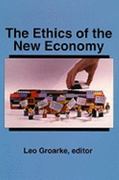,solve the following
Question 1: Problem solving {Ill Marks) The Production Costi'canister {$) and the Weekly Sales 1'v'olume (number of canisters) of a variety of olive oil were recorded in a sample of 6 oil trading companies (table below): 011 Tradin Corn . Inn-nun _lm Weekl SalesVolume canistersxl Ill-m!\" 1. Construct a simple regression model to predict the Weekly Sales Volume by Production Coscanister. (4 Marks) 2. Find the predicted Weekly Sales Volume on that olive oil variety in an oil trading companyr where the Production Cost is $ SSI'canister. {I Mark) 3. Compute r2 and r forthis mode}. and interpret their values in this case. (3.5 Marina} 4. Calculate the prediction error for the "i'v'eeltljiF Sales Volume value of 600 canisters based on the regression model constructed previously. (1.5 Marks) Question 2 (50 marks): The following graph is found in most economics texts and it illustrates how an economy can get outside its PPF through free trade. Solving this problem is a straight-forward application of Lagrange. Skippy lives on a small island full of resources that lets her produce two goods: x and y. Her production possibility frontier (constraint) is given by x2 + y2 = 300. Skippy works alone to maximize her utility which is given by U(x; y) = x2y. (1) Set up the Lagrangian function for Skippy and solve for x and y. Use your solution to calculate U. (10 marks) (2) Carefully graph and label the PPF and Indifference Curve at the optimum. (10 marks) Now Skippy has the opportunity of trading in the world market. Skippy can trade whatever x and y she has at prices px and py. To maximize her gains from trade, Skippy needs to follow a 2-step process. Step 1. First, she maximizes her endowment position (maximize trading line) subject to her PPF, where the solution to this Lagrange problem (xE, yE) is her production decision and are her endowments she will use for trade. Step 2. Second, she maximizes utility subject to the constraint, pxxE + pyyE = pxx + pyy, where x and y are the quantities she trades for that maximize her utility. (3) If px = py = $1, please solve the Lagrangian that maximizes her endowments. Then use the endow- ment value and prices are given in the trading constraint to maximize her utility by the Lagrangian method. Calculate her utility number. (20 marks) (4) Give an economic interpretation to each Lagrangian multiplier in the endowment-maximization problem and the utility-maximization problem in (3). (10 marks)\fSkippy lives on a samll island full of resources that lets her produce two goods: r and y. Her production possibility frontier (constraint) is given by a2 + y' = 300. Skippy works alone to maximize her utility which is given by U(x, y) = xy. (1) Set up the Lagrangian function for Skippy and solve for r and y. Use your solution to calculate U. (10 marks) (2) Carefully graph and label the PPF and Indifference Curve at the optimum. (10 marks) Now Skippy has the opportunity of trading in the world market. Skippy can trade whatever r and y she has at prices pr and py. To maximize her gains from trade, Skippy needs to follow a 2-step process. Step 1. First, she maximizes her endowment position (maximize trading line) subject to her PPF, where the solution to this lagrange problem (XE, yE) is her production decision and are her endowments she will use for trade. Step 2. Second, she maximizes utility subject to the constraint, PETE + PyyE = Par* + pyy", where r* and y* are the quantities she trades for that maximize her utility. (3) If Pr = Py = $1, please solve the Lagrangian that maximizes her endowments. Then use the endow- ment value and prices given in the trading constraint to maximize her utility by the Lagrangian method. Calculate her utility number. (20 marks) (4) Give an economic intrepretation to each Lagrangian multiplier in the endowment-maximization problem and the utility-maximization problem in (3). (10 marks)










